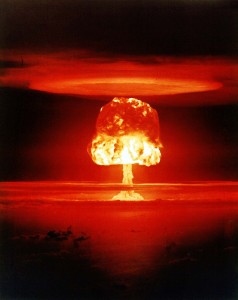FRIDAY, 10 AUGUST 2012
For example, methods of tracing atmospheric radioactive particles which were developed for use in Cold War weapons tests, and subsequently used during the Fukushima disaster, have also been used in more benign research. Tracking radioactive carbon-13 as it circulates through the biosphere is an invaluable tool used to investigate anthropogenic climate change. There’s more- the numerical methods found in early climatic models are almost twinned with those used by weapon designers in their analysis of nuclear shock waves. Other nuclear research has provided scientists with crucial information about the impact of both carbon dioxide and aerosols on our planet.A new lease of life has also been given to Cold War era US laboratories. Their supercomputers, and the accompanying modelling expertise, are now used to tackle problems facing climate change scientists. Without this new purpose it is unlikely funding for these laboratories would have continued.
Edwards, at the University of Michigan, sums up the situation by noting, “Today, the laboratories built to create the most fearsome arsenal in history are doing what they can to prevent another catastrophe – this one caused not by behemoth governments at war, but by billions of ordinary people living ordinary lives within an energy economy that we must now reinvent.”
DOI: 10.1177/0096340212451574
Written by Patrick Kirkham

